A much more comfortable observing position can be achieved with a refractor or catadioptric telescope by using an erecting lens. The beam of light exiting the telescope is deflected by 90° before it enters the eyepiece. In this way, even objects close to the zenith can be observed comfortably.
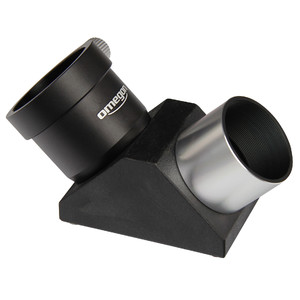
Omegon
1.25" 90° Amici prism
( 5 / 5 )
$ 24.90
ready for shipping in 24
h
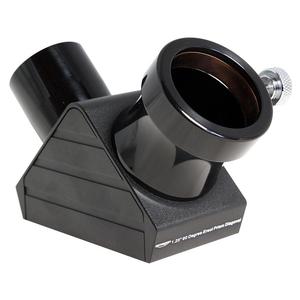
Omegon
1,25'' Amici Prism 90°
( 5 / 5 )
$ 149.00
ready for shipping in 24
h
/Omegon-Amici-prism-90d-2-.jpg)
Omegon
Amici prism 90° 2"
$ 369.00
ready for shipping in 24
h
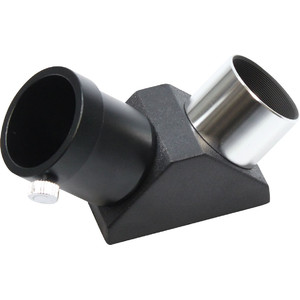
Skywatcher
Amici prism 90° 1,25"
$ 66.00
ready for shipping in 1-2
weeks
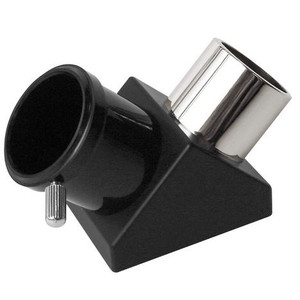
Bresser
Amici prism 90° 1,25"
$ 58.00
ready for shipping in 1-2
weeks
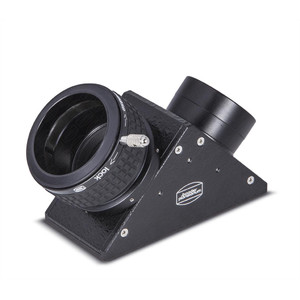
Baader
Amici prism ClickLock BBHS® 90° 2"
$ 790.00
ready for shipping in 1-2
weeks
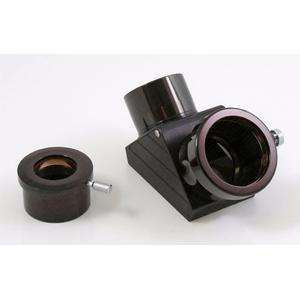
Baader
Amici prism 90° 2"
$ 343.00
ready for shipping in 1-2
weeks
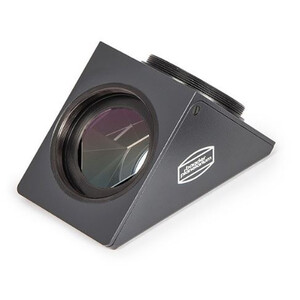
Baader
Amici prism 90° T2 BBHS®
$ 347.00
ready for shipping in 1-2
weeks
Erecting lenses are available as zenith mirrors, zenith prisms or Amici prisms. The latter are useful for terrestrial observation and are therefore also available with a flatter deflection angle of 45°.
- Without an erecting lens, the image in the telescope depicts north below and east to the right.
- With zenith mirrors and zenith prisms, the telescope depicts a laterally transposed image: north is at the top, east is at the right and, without tracking, stars wander to the left.
- Amici prisms show a correct image as it would be seen with the naked eye. Therefore, these prisms are essential for nature-watching. However, their more complicated construction makes them susceptible to image defects, which is why the laterally transposed image is preferred in astronomy.
Most erecting lenses have simple plug-in connectors, as is common seen with eyepieces. For SC telescopes, however, there are also models with screw threads.
